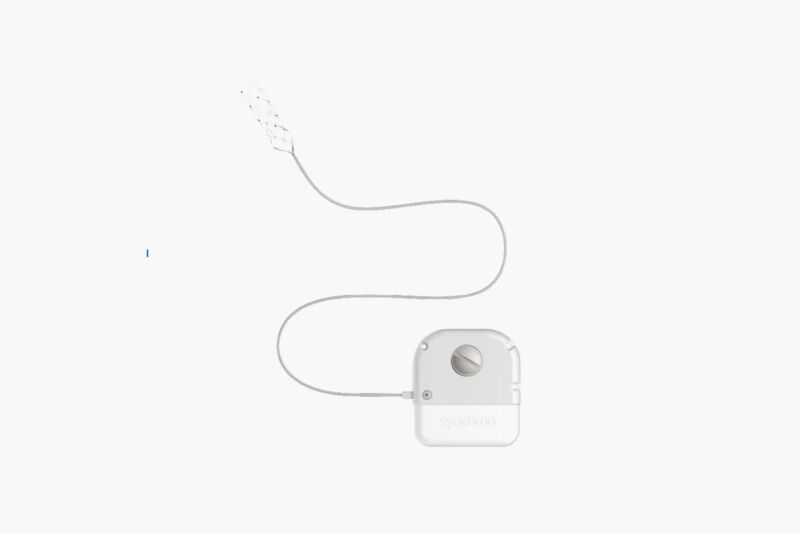The Age Of Brain-Computer Interfaces Is On the Horizon

Thomas Oxley has a love-hate relationship with Black Mirror. On the one hand, he can appreciate the show’s “gripping” appeal. On the other hand, it means facing a deluge of accusations that he’s spearheading humanity’s dystopian future.
Oxley is the founder and CEO of Synchron, a company creating a brain-computer interface, or BCI. These devices work by eavesdropping on the signals emanating from your brain and converting them into commands that then enact a movement, like moving a robotic arm or a cursor on a screen. The implant essentially acts as an intermediary between mind and computer.
“[Black Mirror is] so negative, and so dystopian. It’s gone to the absolute worst-case scenario … so much good stuff would have happened to have gotten to that point,” he says, referring to episodes of the show that demonstrate BCI technology being used in ethically dubious ways, such as to record and replay memories. The “good stuff” is what Oxley is trying to do with his company. And on July 6, the first patient in the US was implanted with Synchron’s device at a hospital in New York. (The male patient, who has lost the ability to move and speak as a result of having amyotrophic lateral sclerosis—a progressive disease that affects nerve cells— has requested anonymity on the basis that he did not wish to promote the device before “experiencing its pros and cons.”)

The device promises patients the ability to control the mouse of their personal computer and use it to click. That simple movement could allow them to text their doctor, shop online, or send an email. The digital world has already seeped into every corner of modern human existence, providing all sorts of services—“but to use them, you need to use your fingers,” Oxley says. For the estimated 5.6 million people living with a form of paralysis in the United States, that access isn’t always available.
After the intense media coverage devoted to Elon Musk’s BCI company, Neuralink, you’d be forgiven for thinking the technology is a novel scientific innovation. In reality, it has been around for a couple of decades. But apart from Synchron’s, the only other BCI approved by the US Food and Drug Administration for testing in clinical trials is the Utah array, a tiny device consisting of a series of electrodes that gets implanted in the brain. Implantation requires cutting open the scalp and drilling into the skull. “It’s a very invasive thing; it’s not something that you do recreationally—unless you’re really into weird things,” says Konrad Kording, a computational neuroscientist at the University of Pennsylvania.
The real novelty with Synchron’s device, he says, is that surgeons don’t have to cut open your brain, making it far less invasive, and therefore less risky for patients. The device, called a Stentrode, has a mesh-like design and is about the length of a AAA battery. It is implanted endovascularly, meaning it’s placed into a blood vessel in the brain, in the region known as the motor cortex, which controls movement. Insertion involves cutting into the jugular vein in the neck, snaking a catheter in, and feeding the device through it all the way up into the brain, where, when the catheter is removed, it opens up like a flower and nestles itself into the blood vessel’s wall. Most neurosurgeons are already up to speed on the basic approach required to put it in, which reduces a high-risk surgery to a procedure that could send the patient home the very same day. “And that is the big innovation,” Kording says.
READ MORE HERE


